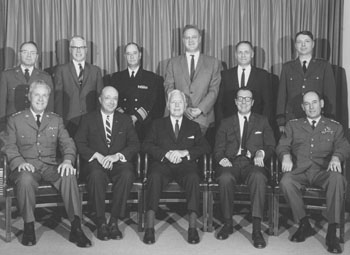|
Keemathnka
Kimathanka is a Village (previously, a village development committee) in Bhotkhola rural municipality of Sankhuwasabha District of Province No. 1, Nepal and serves as the Nepalese counterpart of the Nepal-China (Tibet autonomous region) border at Zhentang (Chentang). At the time of the 1991 census, it had a population of 303 people living in 50 individual households. Being among the most remote Himalayan villages of Nepal, Kimathanka is also the end point of the in-progress 362 kilometers long Biratnagar- Khandbari-Kimathanka road called Koshi Highway, which plans to connect the village with the provincial headquarter of Biratnagar and subsequently, with the Indian border town of Jogbani. The Arun River runs through the valley below the village. In 2019, road embankment construction on the Chinese side led to fear of potential downstream flooding in Kimathanka. In November 2020, Prime Minister of Nepal KP Sharma Oli visited Kimathanka inspecting the progress of Koshi Highw ... [...More Info...] [...Related Items...] OR: [Wikipedia] [Google] [Baidu] |
Village
A village is a clustered human settlement or community, larger than a hamlet but smaller than a town (although the word is often used to describe both hamlets and smaller towns), with a population typically ranging from a few hundred to a few thousand. Though villages are often located in rural areas, the term urban village is also applied to certain urban neighborhoods. Villages are normally permanent, with fixed dwellings; however, transient villages can occur. Further, the dwellings of a village are fairly close to one another, not scattered broadly over the landscape, as a dispersed settlement. In the past, villages were a usual form of community for societies that practice subsistence agriculture, and also for some non-agricultural societies. In Great Britain, a hamlet earned the right to be called a village when it built a church. [...More Info...] [...Related Items...] OR: [Wikipedia] [Google] [Baidu] |
Khandbari
Khandbari is the district headquarters of Sankhuwasabha District in Province No. 1 of north-eastern Nepal. The 2011 Nepal census counted 26,301 population. The area A road connects Khandbari directly south to Biratnagar and the Terai. Khandbari will be soon connected with Kimmathanka and Tibet. Khandbari is fastest growing city and most developed among Hilly Region. It has established itself as a trading center for people of sankhuwasabha and some parts of Bhojpur districts. Khandbari's reputed schools include Himalayan Higher secondary school ,Barun Secondary English School, Surya Higher Secondary Boarding School, Bagishwari Secondary School, Makalu English Boarding School and Sunshine English Secondary Boarding School. Arun III Hydropower project is located nearby. Arun III Hydropower project is one of the major subjects that really matters to the residents. About north from Khandbari lies another small bazaar known as Manebhanjyang which is an emerging business centre pe ... [...More Info...] [...Related Items...] OR: [Wikipedia] [Google] [Baidu] |
Polyandry
Polyandry (; ) is a form of polygamy in which a woman takes two or more husbands at the same time. Polyandry is contrasted with polygyny, involving one male and two or more females. If a marriage involves a plural number of "husbands and wives" participants of each gender, then it can be called polygamy, group marriage, group or conjoint marriage. In its broadest use, polyandry refers to sexual relations with multiple males within or without marriage. Of the 1,231 societies listed in the 1980 Ethnographic Atlas, 186 were found to be monogamous, 453 had occasional polygyny, 588 had more frequent polygyny, and 4 had polyandry.''Ethnographic Atlas Codebook'' derived from George P. Murdock's ''Ethnographic Atlas'' recording the marital composition of 1,231 societies from 1960 to 1980. Polyandry is ... [...More Info...] [...Related Items...] OR: [Wikipedia] [Google] [Baidu] |
Xinhua Daily Telegraph
The ''Xinhua Daily Telegraph'' (abbreviated as ''XDT''; ), alternatively translated as the ''New China Daily Dispatch'', ''Xinhua Daily Newswires'', is a China's state-run Chinese newspaper hosted by Xinhua News Agency. Based in Beijing, the newspaper was launched on January 1, 1993, and its predecessor was the ''Press Release of Xinhua News Agency'' (新华社新闻稿). Xu Wu was involved in the founding of the paper. ''Xinhua Daily Telegraph'' is published and owned by Xinhua News Agency. On January 1, 2021, it was newly revised, with the word "Xinhua" in the masthead changed to Mao Zedong's handwriting and the "Daily Telegraph" still printed in Song typeface Ming or Song is a category of typefaces used to display Chinese characters, which are used in the Chinese, Japanese and Korean languages. They are currently the most common style of type in print for Chinese and Japanese. Name The names ' .... References Xinhua News Agency State media Daily newspapers publi ... [...More Info...] [...Related Items...] OR: [Wikipedia] [Google] [Baidu] |
Yuanfang De Jia
''Yuanfang De Jia'' (, officially ''Homeland, Dreamland'') is a travel documentary series created by China Central Television, which was first broadcast on 1 December 2010, on CCTV-1, CCTV-4, and CCTV-22. Seasons Season 1 ''Bianjiang Xing'' () also known as ''Walking in the Chinese Border''. The first season focus on the land borders around China with the crew starting at Fangchenggang in Guangxi traveling along the 22,800 kilometers of land border in a clockwise direction to Dandong in Liaoning and traveling through Guangxi, Yunnan, Tibet, Xinjiang, Gansu, Inner Mongolia, Heilongjiang, Jilin, and Liaoning. Bianjiang Xing shooting time took up to six months. Season 2 ''Yanhai Xing'' () also known as ''Walking along the Chinese Coastline''. The second season focus on the eastern coast of China with the crew starting at Dandong in Liaoning the end point of the first season traveling along the 18,000 kilometers of China's coast to Fangchenggang in Guangxi the starting point of the fi ... [...More Info...] [...Related Items...] OR: [Wikipedia] [Google] [Baidu] |
China Central Television
China Central Television (CCTV) is a Chinese state- and political party-owned broadcaster controlled by the Chinese Communist Party (CCP). Its 50 different channels broadcast a variety of programing to more than one billion viewers in six languages. However, news reporting about topics sensitive to the CCP is distorted and often used as a weapon against the party's perceived enemies, according to Freedom House and other media commentators. CCTV is operated by the National Radio and Television Administration which reports directly to the CCP's Central Propaganda Department. CCTV was established on 1 May 1958 as a state-owned propaganda outlet. CCTV has a variety of functions, such as news communication, social education, culture, and entertainment information services. As a state television station it is responsible to both the Central Committee of the Chinese Communist Party and the State Council. It is a central player in the Chinese government's propaganda network. Hist ... [...More Info...] [...Related Items...] OR: [Wikipedia] [Google] [Baidu] |
Bureau Of Intelligence And Research
The Bureau of Intelligence and Research (INR) is an intelligence agency in the United States Department of State. Its central mission is to provide all-source intelligence and analysis in support of U.S. diplomacy and foreign policy. INR is the oldest civilian element of the U.S. Intelligence Community and among the smallest, with roughly 300 personnel. Though lacking the resources and technology of other U.S. intelligence agencies, it is "one of the most highly regarded" for the quality of its work. INR is descended from the Research and Analysis Branch (R&A) of the World War II-era Office of Strategic Services (OSS), which was tasked with identifying the strengths and weaknesses of the Axis powers. Widely recognized as the most valuable component of the OSS, upon its dissolution in 1945, R&A assets and personnel were transferred to the State Department, forming the Office of Intelligence Research. INR was reorganized into its current form in 1957. In addition to supportin ... [...More Info...] [...Related Items...] OR: [Wikipedia] [Google] [Baidu] |
Tibet
Tibet (; ''Böd''; ) is a region in East Asia, covering much of the Tibetan Plateau and spanning about . It is the traditional homeland of the Tibetan people. Also resident on the plateau are some other ethnic groups such as Monpa people, Monpa, Tamang people, Tamang, Qiang people, Qiang, Sherpa people, Sherpa and Lhoba peoples and now also considerable numbers of Han Chinese and Hui people, Hui settlers. Since Annexation of Tibet by the People's Republic of China, 1951, the entire plateau has been under the administration of the People's Republic of China, a major portion in the Tibet Autonomous Region, and other portions in the Qinghai and Sichuan provinces. Tibet is the highest region on Earth, with an average elevation of . Located in the Himalayas, the highest elevation in Tibet is Mount Everest, Earth's highest mountain, rising 8,848.86 m (29,032 ft) above sea level. The Tibetan Empire emerged in the 7th century. At its height in the 9th century, the Tibet ... [...More Info...] [...Related Items...] OR: [Wikipedia] [Google] [Baidu] |
KP Sharma Oli
Khadga Prasad Sharma Oli ( ne, खड्गप्रसाद शर्मा ओली, ; born 22 February 1952) is a Nepalese politician and former Prime Minister of Nepal. He served three terms as prime minister from 11 October 2015 to 3 August 2016, from 15 February 2018 to 13 May 2021 as the first elected prime minister under the new constitution, and from 13 May 2021 to 13 July 2021. Oli is noted for taking a more hardline stance with regard to the Indian government during and in the aftermath of the 2015 Nepal blockade. He strengthened relations with China as an alternative to Nepal's traditional close trade ties with India and updated the map of Nepal by constitutional amendment including territories disputed with India, for which he has received some domestic praise and a reputation as a nationalist. While in office, Oli was marred by controversy for frequent use of tongue-in-cheek remarks, hostility towards critics and the media, silence on corruption by colleagues a ... [...More Info...] [...Related Items...] OR: [Wikipedia] [Google] [Baidu] |
Prime Minister Of Nepal
The Prime Minister of Nepal ( ne, नेपालको प्रधानमन्त्री) is the head of government of Nepal. The Prime Minister is the head of the Council of Ministers of Nepal and the chief adviser to the President of Nepal. The federal cabinet headed by the prime minister is appointed by the president to assist the latter in the administration of the affairs of the executive. The prime minister has to enjoy the confidence of a majority in the Pratinidhi Sabha and shall resign if they are unable to prove majority when instructed by the president. The residence of the prime minister of Nepal is in Baluwatar, Kathmandu. The seat of the prime minister is Singha Darbar since the time of Chandra Shamsher Jang Bahadur Rana. The basic monthly salary of the prime minister of Nepal is NPR 77,280. The current prime minister is Pushpa Kamal Dahal from CPN (Maoist Center since 25 December 2022. He was appointed by the President Bidhya Devi Bhandari as per Articl ... [...More Info...] [...Related Items...] OR: [Wikipedia] [Google] [Baidu] |
The Kathmandu Post
''The Kathmandu Post'' is a major daily newspaper published in Nepal. Founded in February 1993 by Shyam Goenka, it is one of the largest English-language newspapers in the country. The newspaper is independently owned and published by Kantipur Publications, the owners of Nepal's largest selling newspaper, the Nepali-language ''Kantipur''. ''Post'' is a member of the Asia News Network, an alliance of nineteen Asian newspapers. The ''Kathmandu Post'' is Nepal's first privately owned English broadsheet daily, and is Nepal's largest selling English language newspaper, with a daily circulation of 95,000 copies. The Post's first five pages are primarily dedicated to national news and each day, the last page offers a variety of features, including explainers, interviews, auto reviews, and restaurant reviews and destinations. During the weekdays, the newspaper also features culture & arts pages, which cover national and international news on society, life & style, fashion and technol ... [...More Info...] [...Related Items...] OR: [Wikipedia] [Google] [Baidu] |




